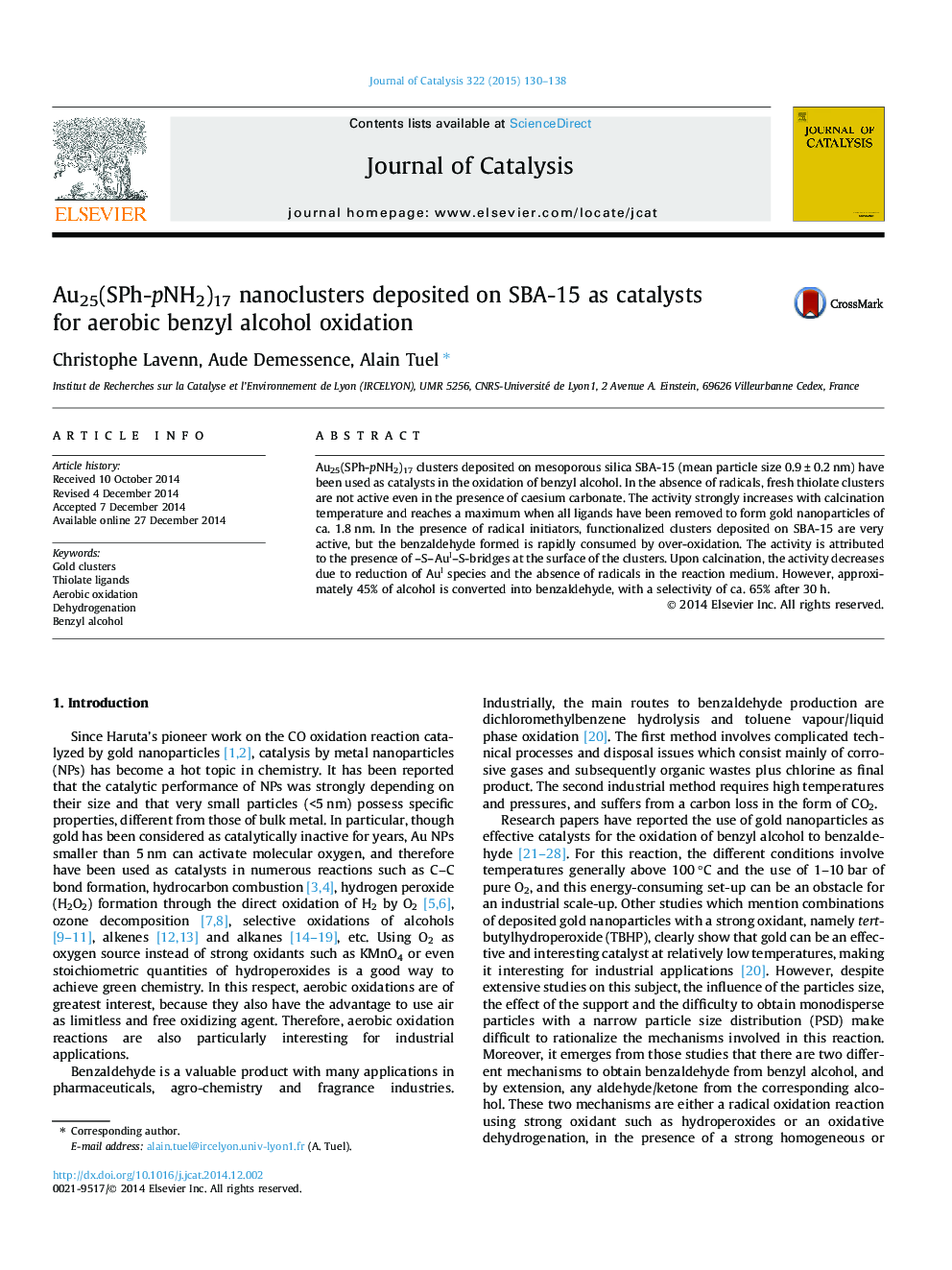| Article ID | Journal | Published Year | Pages | File Type |
|---|---|---|---|---|
| 60879 | Journal of Catalysis | 2015 | 9 Pages |
•Au25(SPh-pNH2)17 gold nanoclusters can be deposited on the surface of SBA-15.•Their calcination leads to monodispersed Au nanoparticles of ca. 1.8 nm.•Clusters catalyse the aerobic oxidation of benzyl alcohol using radical initiators.•Reaction mechanisms change when deposited clusters are calcined.
Au25(SPh-pNH2)17 clusters deposited on mesoporous silica SBA-15 (mean particle size 0.9 ± 0.2 nm) have been used as catalysts in the oxidation of benzyl alcohol. In the absence of radicals, fresh thiolate clusters are not active even in the presence of caesium carbonate. The activity strongly increases with calcination temperature and reaches a maximum when all ligands have been removed to form gold nanoparticles of ca. 1.8 nm. In the presence of radical initiators, functionalized clusters deposited on SBA-15 are very active, but the benzaldehyde formed is rapidly consumed by over-oxidation. The activity is attributed to the presence of –S–AuI–S-bridges at the surface of the clusters. Upon calcination, the activity decreases due to reduction of AuI species and the absence of radicals in the reaction medium. However, approximately 45% of alcohol is converted into benzaldehyde, with a selectivity of ca. 65% after 30 h.
Graphical abstractFigure optionsDownload full-size imageDownload high-quality image (162 K)Download as PowerPoint slide
